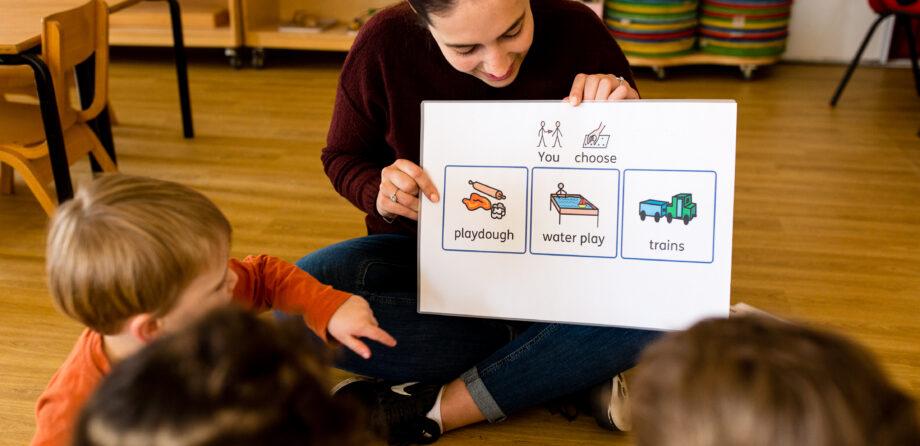
Supporting young children with English as an Additional Language (EAL) in early years settings.
In early years settings, children with EAL arrive with a wide range of backgrounds and experiences. Some may have already begun learning English before joining, while others are encountering it for the very first time. Their home environments also vary; for some, English is used regularly outside the nursery, while for others, it may be rarely heard. Some children may also have additional needs, such as speech and language delays, which can further shape their language learning journey.
Because of this diversity, there is no one-size-fits-all approach; however, there are strategies that we can incorporate into everyday practice to ensure that all children feel included, understood, and able to participate.
1. Help children express their identity
A child’s name is fundamental to their identity, so it’s important for teachers and peers to pronounce it correctly and to be aware of how a child prefers to be known. You can create a simple visual profile using symbols and photos. Include the child’s name (with phonetic pronunciation if needed), nickname, home language(s), and things they like, e.g. toys, food, hobbies. This helps staff and peers to refer to the child correctly and begin conversations.
By intentionally giving children the tools to express their identity, we strengthen belonging and make way for richer communication. It’s also helpful to build strong communication with parents, for example, by using dual language templates or translated messages, so families feel included and supported in sharing information about their child’s background, language, and preferences.
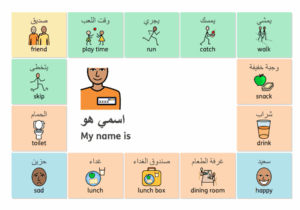
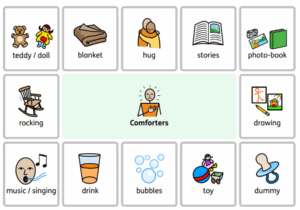
2. Create an inclusive environment
When children understand what is going to happen, they are less likely to be anxious. Teachers can provide a visual representation of the day ahead. This can be as simple as a now/next board which explains what they will be doing first, with a symbol to depict one activity, such as story time, followed by another symbol showing building with bricks. Or it could be a visual timetable of the day where children can remove cards as each activity is completed.
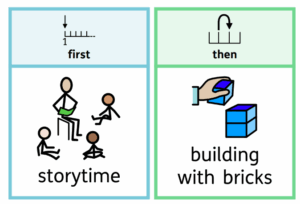
Additionally, you can label the nursery environment with visuals such as low shelves, baskets, areas, and resources. For example, a basket for ‘blocks’ may display a simple symbol and the word in English, as well as, if possible, in the child’s home language. This helps children connect spoken instructions to real objects.
3. Use visuals to accompany teacher talk
When children with EAL are listening to the teacher give instructions, ask questions, or tell a story, they can easily miss one or two vital words, which reduces their level of understanding. An image stays in the mind much longer than the spoken word, so using symbols helps to fill the gaps in understanding and makes the message clearer.
Using symbols alongside words can improve memory retention according to Dual Coding theory, developed by Allan Paivio. Dual coding suggests the memory uses two different channels to store information – visual and verbal – and connecting these makes it easier to transform information into knowledge.
To help children understand a story, try using symbols to represent the key characters and actions, and put these together to make a storyboard. Repetition is also key; hearing and seeing the same words, phrases, and visuals regularly helps children absorb and retain new language.
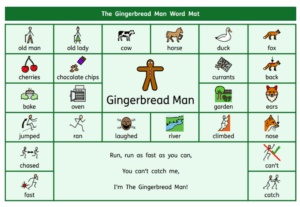
Key takeaways for early years practitioners
Support for children with EAL should not feel like a separate activity. Instead, it works best when woven naturally into everyday play, group times, and transitions. Small adjustments, such as adding visual labels, modelling simple language, and using routines consistently, can make a big difference to children’s confidence and participation. These inclusive practices benefit all children, not just those learning English, helping to create a shared understanding and a nurturing, supportive environment where everyone can thrive.
It is also important to celebrate and value each child’s home language and cultural identity. When children see their language reflected and respected, they feel a stronger sense of belonging, which boosts both their confidence and willingness to engage.
Language learning is always a journey, and progress may sometimes feel slow. However, with ongoing visual support, inclusive practices, and warm, responsive interactions, every child can be supported to communicate, connect, and flourish in your setting.
Widgit Online makes it easy to create visual timetables, routine cards, and communication aids that bring your setting to life. Start your free 30-day trial today.
- Communication
Similar Articles
Top Tips for Inclusive Christmas Celebrations

Early years activity: Comparing natural objects


